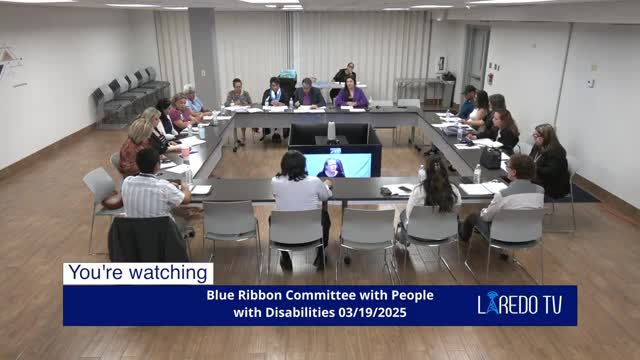Health department reports progress and delays in autism surveillance participation in ADDM Network
March 22, 2025 | Laredo, Webb County, Texas
This article was created by AI summarizing key points discussed. AI makes mistakes, so for full details and context, please refer to the video of the full meeting. Please report any errors so we can fix them. Report an error »

Laredo Public Health staff provided an update on the city’s participation in the CDC’s Autism and Developmental Disabilities Monitoring (ADDM) Network, reporting expansion of surveillance coverage and a temporary delay in national reporting caused by a pause in communications from the CDC earlier this year.
Alonso Olivares, introduced as an epidemiologist and project coordinator for the autism surveillance effort (referred to as the AVID Network project), said the program collects data from education and health sources to estimate the number and characteristics of children with autism in the community. He told the committee that the project had a communications halt with the CDC while a new federal administration was starting in January; funding was not affected but the interruption delayed meetings and the timeline for the national report.
Olivares said Webb County data collection was completed in the program’s first year and that the effort is expanding to surrounding counties this year. He said the full federal report was expected to be delayed beyond the initial March timeline and that the local team hoped to have a clearer release date following a planned follow-up meeting with CDC staff.
Public-health staff emphasized the program’s role in producing prevalence estimates used nationally: the ADDM Network provides standardized surveillance across selected communities and helps compare local data to other sites. Staff also noted that the program’s processes are deliberate — surveillance is retrospective, uses specific age ranges and data elements, and produces reports on a regular schedule. Committee members asked basic questions about frequency; staff said the surveillance snapshot is produced roughly every two years based on prior-year data.
No policy action was taken; staff said they would share the national release date with the committee once the CDC confirms it.
Alonso Olivares, introduced as an epidemiologist and project coordinator for the autism surveillance effort (referred to as the AVID Network project), said the program collects data from education and health sources to estimate the number and characteristics of children with autism in the community. He told the committee that the project had a communications halt with the CDC while a new federal administration was starting in January; funding was not affected but the interruption delayed meetings and the timeline for the national report.
Olivares said Webb County data collection was completed in the program’s first year and that the effort is expanding to surrounding counties this year. He said the full federal report was expected to be delayed beyond the initial March timeline and that the local team hoped to have a clearer release date following a planned follow-up meeting with CDC staff.
Public-health staff emphasized the program’s role in producing prevalence estimates used nationally: the ADDM Network provides standardized surveillance across selected communities and helps compare local data to other sites. Staff also noted that the program’s processes are deliberate — surveillance is retrospective, uses specific age ranges and data elements, and produces reports on a regular schedule. Committee members asked basic questions about frequency; staff said the surveillance snapshot is produced roughly every two years based on prior-year data.
No policy action was taken; staff said they would share the national release date with the committee once the CDC confirms it.
View full meeting
This article is based on a recent meeting—watch the full video and explore the complete transcript for deeper insights into the discussion.
View full meeting
